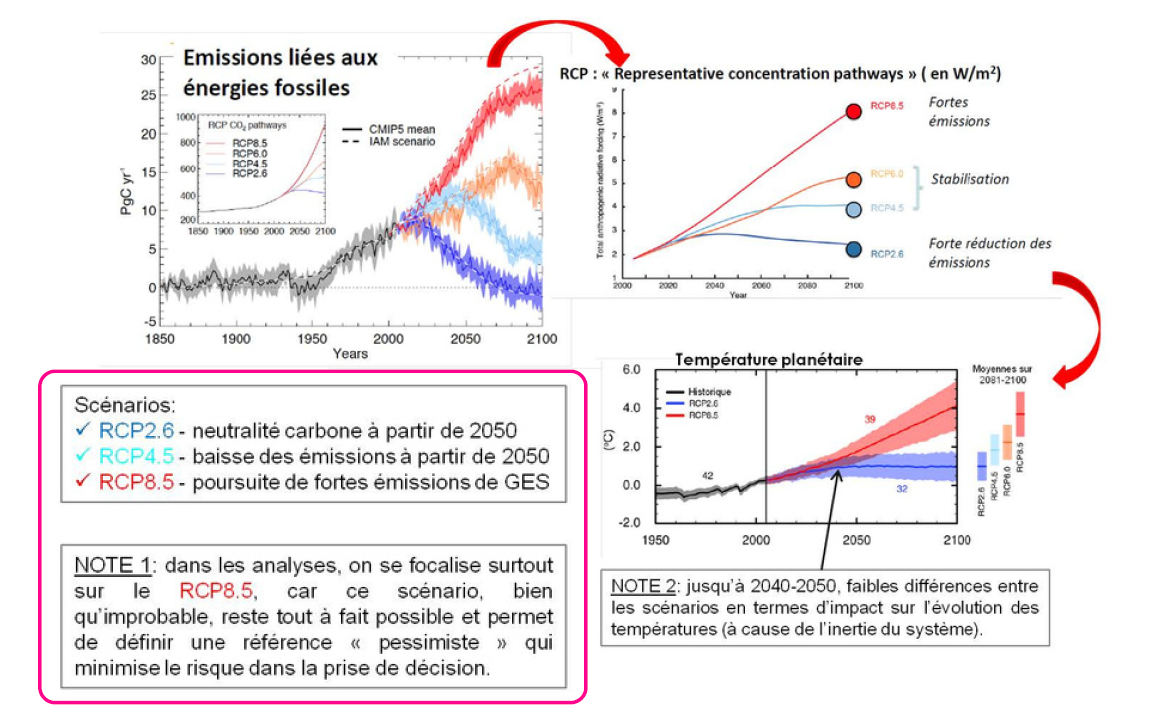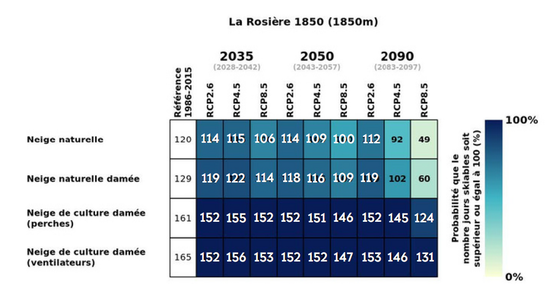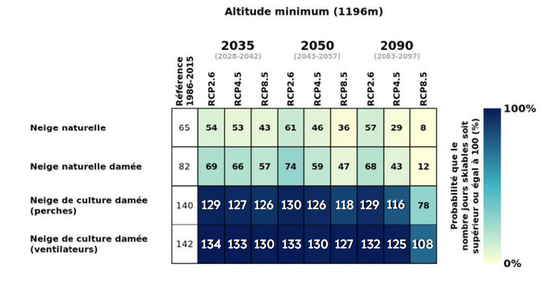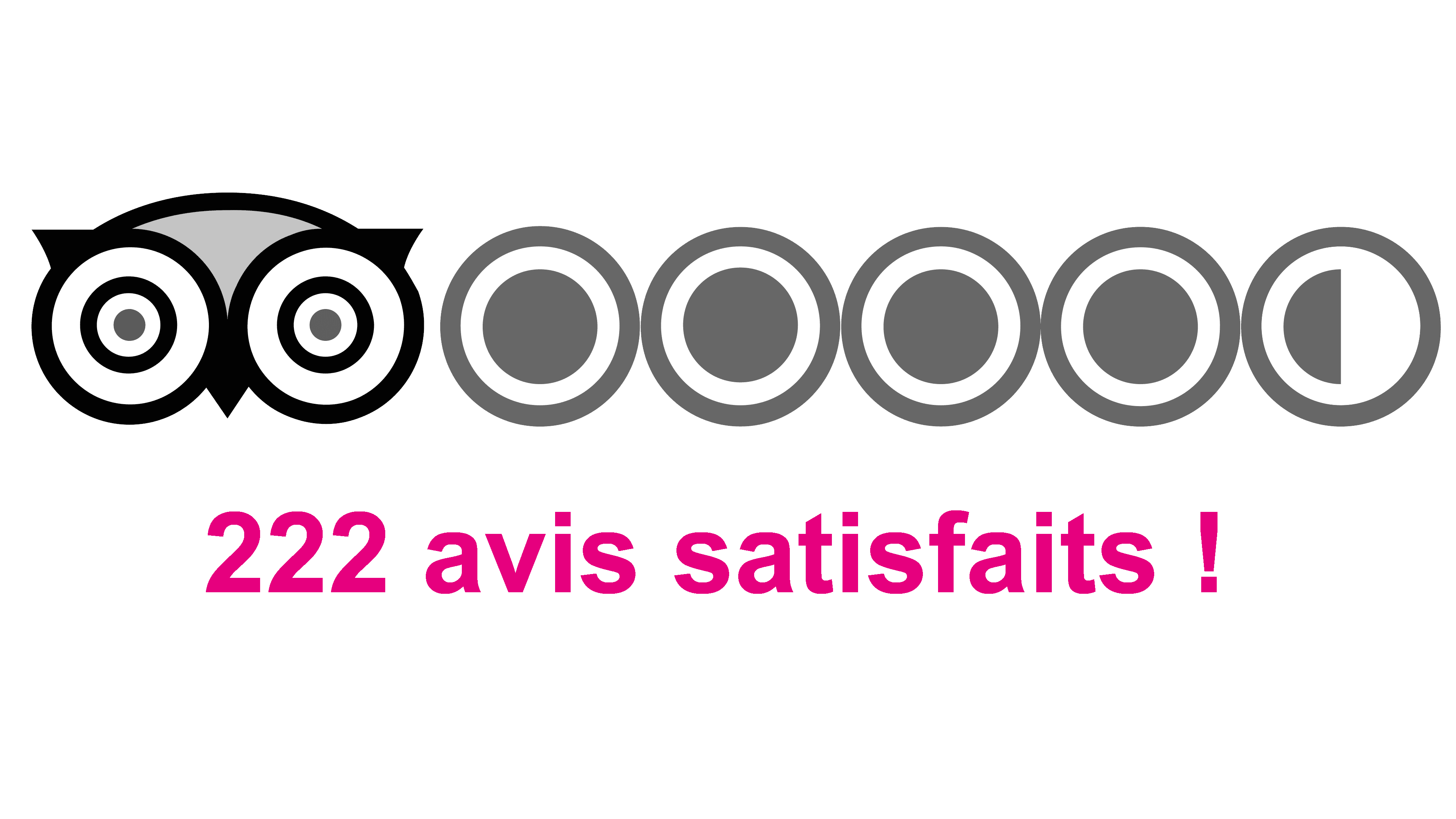CLIMSNOW® STUDY LA ROSIERE
The Climsnow study carried out at La Rosière deals with complex technical issues relating to climate and to snow conditions. Presenting the raw results of this study would make no sense, as only specialists could truly interpret them. This is why we have chosen to present the results in the form of a FAQ, to make the information that follows accessible and understandable to everyone.
Climsnow® study: Frequently asked questions
To conclude
In 2050, a world where global warming is +4.5°C is a world where skiing is no longer a central issue. Humanity will face other problems (famine, drought, flooding, etc.). This is why ski resorts must make every effort to reduce our greenhouse gas emissions so that we can move away from this worst-case scenario of +4.5C.
Even in this world, in 2050, it will still be possible to ski at La Rosière. At the altitude of the resort (1850m), artificial snow will be necessary to ensure an average ski season of more than 4 months. At the resort's average altitude (2115m), natural snow will suffice for a 4-month ski season.
Are you a mountain professional, journalist or researcher?
You can contact us at dsr@dsr-larosiere.com to request the report on the CLIMSNOW® study.
Find out more about snowmaking at La Rosière





















